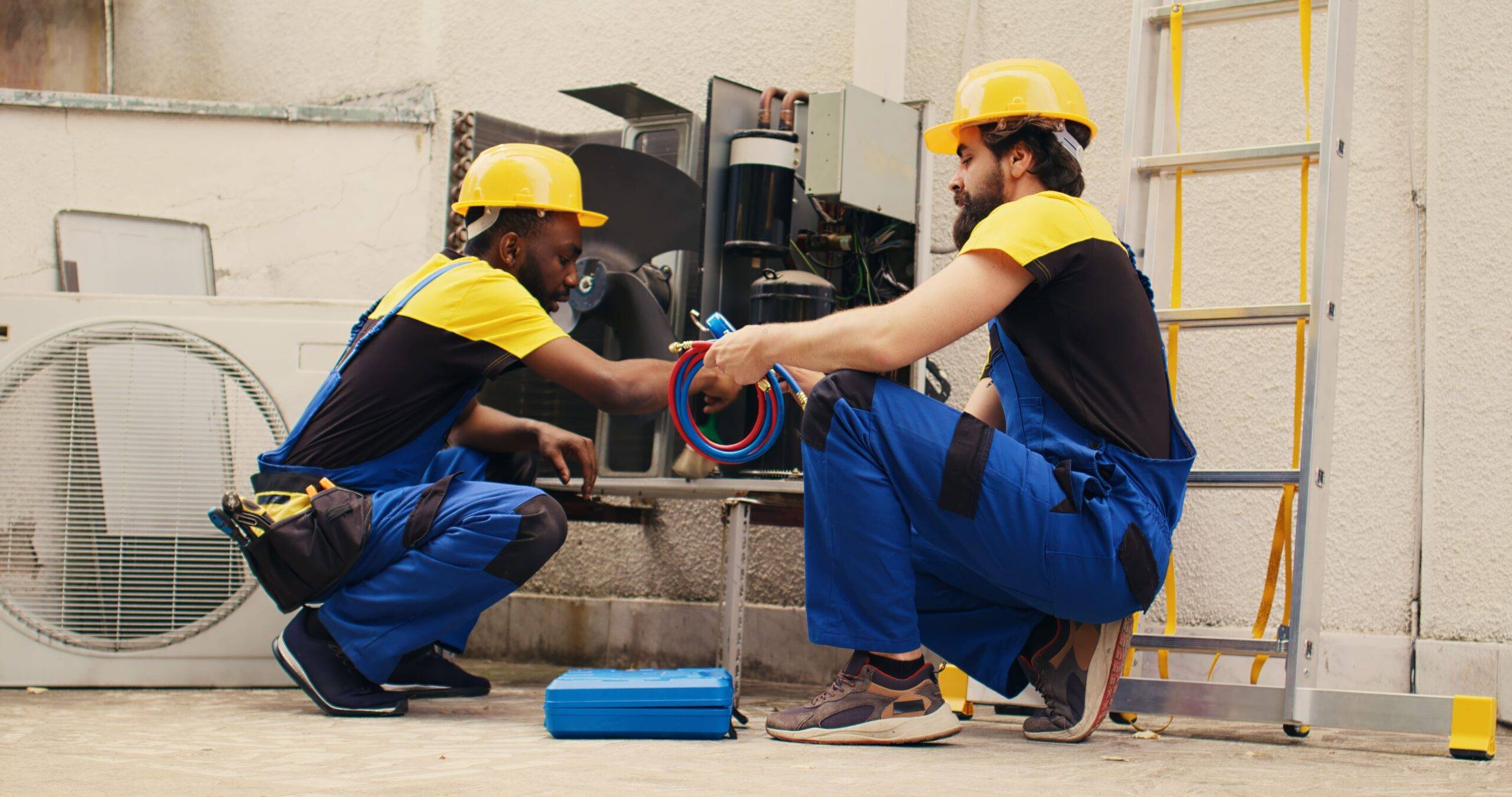10 Critical HVAC Maintenance Tasks for Commercial Facilities
The HVAC system serves as more than just a temperature regulator for managers and owners of commercial buildings. It has a significant effect on consumer comfort, staff productivity, equipment operation, and eventually, the bottom line. Ignoring its maintenance can result in expensive malfunctions, inefficient use of energy, and even health issues. Proactive maintenance is an investment in long-term savings and operational stability, not a cost.
Here are 10 critical HVAC maintenance tasks that every commercial facility owner should know and prioritize:
1. Regular Air Filter Replacement:
- Why it’s critical: Dirty air filters restrict airflow, forcing the HVAC system to work harder, leading to increased energy consumption and potential overheating or freezing. They also reduce indoor air quality, impacting employee health and comfort.
- Best practice: Depending on the system type, usage, and air quality conditions, set up a routine for filter change. This could be quarterly or monthly.
2. Comprehensive Professional System Inspections:
- Why it’s critical: Skilled HVAC professionals are able to see any problems early on, stopping little ones from growing into larger, more expensive malfunctions. They are able to guarantee peak performance and evaluate the system’s general health.
- Best practice: Schedule professional inspections at least twice a year – once before the heating season and once before the cooling season.
3. Coil Cleaning (Evaporator and Condenser):
- Why it’s critical: Dirty coils reduce the system’s ability to transfer heat efficiently, leading to decreased cooling/heating capacity and increased energy usage. Dust, debris, and mold can accumulate on these coils.
- Best practice: Include thorough coil cleaning as part of your professional maintenance schedule. Ensure proper cleaning methods are used to avoid damage.
4. Condensate Drain Line Clearing:
- Why it’s critical: Clogged condensate drain lines can cause water to back up, leading to leaks, water damage, and potential mold growth within the HVAC unit and surrounding areas.
- Best practice: Regularly inspect condensate drain lines for blockages and clear them as needed. This can sometimes be done in-house, but professional cleaning is recommended annually.
5. Fan and Blower Motor Checks:
- Why it’s critical: Skilled HVAC professionals are able to see any problems early on, stopping little ones from growing into larger, more expensive malfunctions. They are able to guarantee peak performance and evaluate the system’s general health.
- Best practice: During professional inspections, ensure technicians check belt tension and condition, lubricate motor bearings (if applicable), and verify proper electrical connections.
6. Refrigerant Level Monitoring and Leak Detection:
- Why it’s critical: Low refrigerant levels reduce the system’s cooling capacity and can indicate leaks, which are harmful to the environment and can damage the compressor.
- Best practice: Refrigerant levels should be checked by a professional during maintenance visits. Any leaks must be identified and repaired promptly.
7. Ductwork Inspection and Cleaning:
- Why it’s critical: Leaky or dirty ductwork can lead to significant energy loss and reduced indoor air quality. Dust, allergens, and other contaminants can accumulate within the ducts and circulate throughout the facility.
- Best practice: Schedule professional ductwork inspections every few years and cleaning as needed, especially if there are signs of dust buildup or poor air quality.
8. Thermostat Calibration and Functionality Checks:
- Why it’s critical: An improperly calibrated or malfunctioning thermostat can lead to inconsistent temperatures, occupant discomfort, and wasted energy.
- Best practice: Ensure thermostats are regularly checked for accuracy and proper functionality during maintenance visits. Consider upgrading to smart thermostats for better control and energy management.
9. Electrical Connection Inspections:
- Why it’s critical: Loose or corroded electrical connections can lead to system malfunctions, overheating, and even fire hazards.
- Best practice: Professional technicians should thoroughly inspect all electrical connections, tighten any loose wires, and check for signs of corrosion during maintenance.
10. Regular System Start-Up and Shut-Down Procedures:
- Why it’s critical: Improper start-up and shut-down procedures can put unnecessary stress on the HVAC system components.
- Best practice: Establish clear and documented procedures for starting up and shutting down the system at the beginning and end of heating/cooling seasons or extended periods of inactivity. Train facility staff in these procedures.
The Bottom Line:
By prioritizing these 10 critical tasks and working with qualified HVAC professionals, you can ensure your system operates efficiently, reliably, and for years to come. Don’t wait for a problem to arise – proactive maintenance is the key to a healthy and productive commercial environment.

